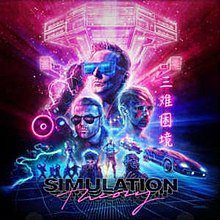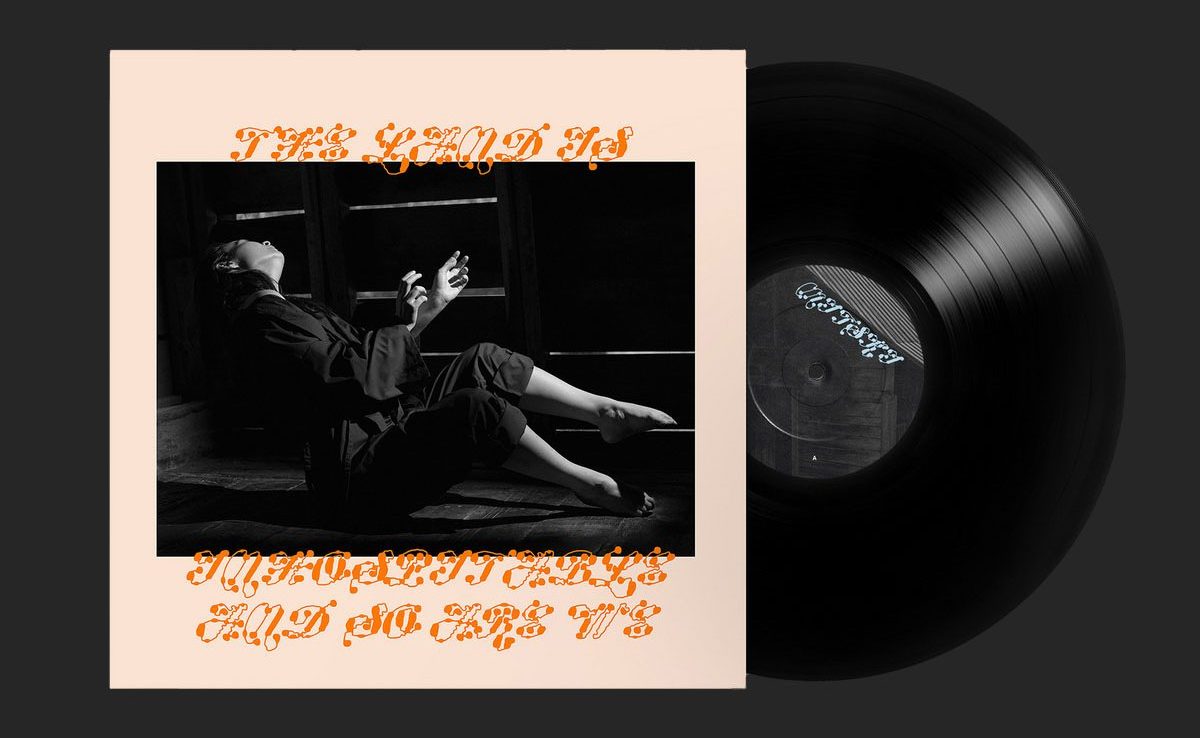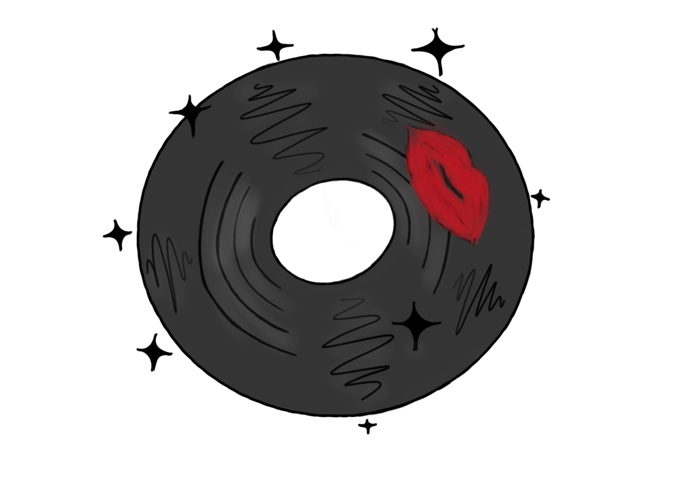*although deluxe versions of Simulation Theory are available, I will only be reviewing the standard 11 tracks.
The British supergroup Muse released their eighth studio album Simulation Theory, Nov. 9. The new album marked many milestones for the band. Designed by Stranger Things artist Kyle Lambert, the album was the first to feature the members on the cover artwork. On the band’s website, Simulation Theory is offered in three formats: standard CD with 11 tracks, deluxe CD with 5 additional tracks and a super deluxe CD/Vinyl box set with 11 tracks, 10 bonus tracks, art print and a 20 page hardback book. Muse has gone all out musically, returning to an electric and synthesized route on the album.
Similar to experimental albums Black Holes and Revelations and The 2nd Law, which featured hits “Supermassive Black Hole” and “Madness,” this new album takes components from both projects. Simulation Theory takes inspiration from ‘80s pop culture and technology in both the artwork and music. After previous works that had a much darker tone such as Grammy winning album Drones, Muse’s new release is much more of a fun jam session. The title of the album comes from the Simulation Hypothesis, which suggests reality is an artificial simulation. This idea contributes to the theme of Simulation Theory.
[spotifyplaybutton play=”https://open.spotify.com/track/7f0vVL3xi4i78Rv5Ptn2s1″/]
The opening track, “Algorithm,” sounds like something out of the movie Tron. With an initial beat similar to “Do I Wanna Know?” by Arctic Monkeys, the track heavily uses synthesizers and has a cinematic tone to it. The thought of wisping by dark, simulated landscapes comes to mind, almost the beginning of some virtual reality experience. The track is the climax of the story, the point where the narrator realizes he is living in a simulation.
[spotifyplaybutton play=”https://open.spotify.com/track/1pbyc2rbpwxZjCbKC2X7UV”/]
“Pressure” stands out on the album with an energetic chorus and melody, and accompanying music video packed full of ‘80s references. The start of the song features horns that follow frontman Matt Bellamy’s guitar. The song slays after the cinematic feel of “Algorithm” and “The Dark Side.” The third track on the album brings a new energy to Muse’s career, one of many new songs that was experimental. “Pressure” takes the perspective of the narrator at a point where he is trying to escape the grasp of his creators, telling them “To you I’m no longer bound” and “when I am done I will make you pay.” A recurring theme of the album, Bellamy’s lyrics constantly call out for resistance against his fictional creators. Simulation Theory, in a way, is very reminiscent of the idea behind Muse’s 2009 album The Resistance, based on standing up and fighting some higher force.
Tracks such as “Break It to Me,” “Something Human” and “Get Up and Fight” are refreshing additions to the album, all with their own distinctive qualities. “Break It to Me” has a strumming technique much like the band Rage Against the Machine, one of its earlier influences. Britney Spears’ technique of whispering the title phrase is used, making the track a strange but appealing blend of different sounds. The same can be said of the track “Propaganda,” which has a heavy metal chorus, despite its R&B inspired melody. “Propaganda” is the narrator’s message to a lover that is trying to manipulate Bellamy and is figuratively killing him with all her propaganda.
[spotifyplaybutton play=”https://open.spotify.com/track/6YnPvxBZFZV7ZGfXyTIYuB”/]
Much can be said about the sixth track, titled “Something Human.” One of the first songs Bellamy wrote after 2015’s Drones, the song perfectly encapsulates the feeling of being in love, of course with a signature Muse twist. The narrator is counting down the miles until he makes it to his partner, thinking about his journey and what he has given up for this person. “Something Human” is very lighthearted and can be interpreted in many different ways, as that “something” Bellamy sings about is never fully fleshed out; “I need something human, and I need your love.” Whether he is singing about escaping the simulation or wanting something human after travelling by himself, the song leaves a warm, fuzzy feeling.
[spotifyplaybutton play=”https://open.spotify.com/track/57lCa95tmjJ8EYdNTex8Kk”/]
Next up is the heavy hitter “Thought Contagion,” the second single of the album. The narrator commentates on a situation where someone has been caught and taken back by their creators, with lyrics “It’s too late for a revolution, brace for the final solution.” At this point, Bellamy seems to be thinking about giving up on escaping. By the end of the song, all hope seems to be lost for the narrator.
[spotifyplaybutton play=”https://open.spotify.com/track/7lvZfms8Bh8QnThBmFTD7a”/]
“Get Up and Fight” is the comeback anthem of the album. With an energetic chorus similar to Foo Fighters’ “My Hero,” Bellamy returns with his desire to revolt. He cites his partner as his inspiration: “What we have is the only thing worth fighting for and I, I won’t let nothing keep us apart,” and “I can’t survive without your love in my life” show Bellamy’s dedication to finding freedom for not only himself but his partner as well. “Blockades” and “Dig Down” both focus on fighting for freedom, the first focusing on self-success while “Dig Down” encourages others.
[spotifyplaybutton play=”https://open.spotify.com/track/5vV3MXW9acnFuYeYO08CHC”/]
The closing track “The Void” is an orchestral-synth mix that wraps up the narrative. Bellamy refers to his creators as “they” and talks of how they think “we won’t rise up and slay giants.” As the song rolls, the energy ramps up with drums and guitar before Bellamy closes off with a final “they’re wrong” and the synth fades out.
Although the album begins with an awakening and a desire to be free, the narrative itself is much more of a journey for self-discovery rather than literal freedom. With vibes close to movies such as Tron, The Matrix and songs of Muse’s past, Simulation Theory is a thought provoking, interesting experimental album that is a fresh addition to their lineup. With exciting ups and downs throughout, the album is a wild ride of emotions.
‘Simulation Theory,’ a journey of virtual self discovery
November 13, 2018
0
Tags:
- Algorithm
- Alternative Rock
- arctic monkeys
- Black Holes and Revelations
- BNslider
- Break It To Me
- Drones
- exist
- Foo Fighters
- french
- Get Up and Fight
- Grammy
- Matt Bellamy
- Muse
- new album
- Patrick Elmore
- pressure
- Propaganda
- Review
- Simulation Theory
- Something Human
- The 2nd Law
- The Dark Side
- The Resistance
- The Void
- Thought Contagion
- Will Napier
More to Discover



















































































